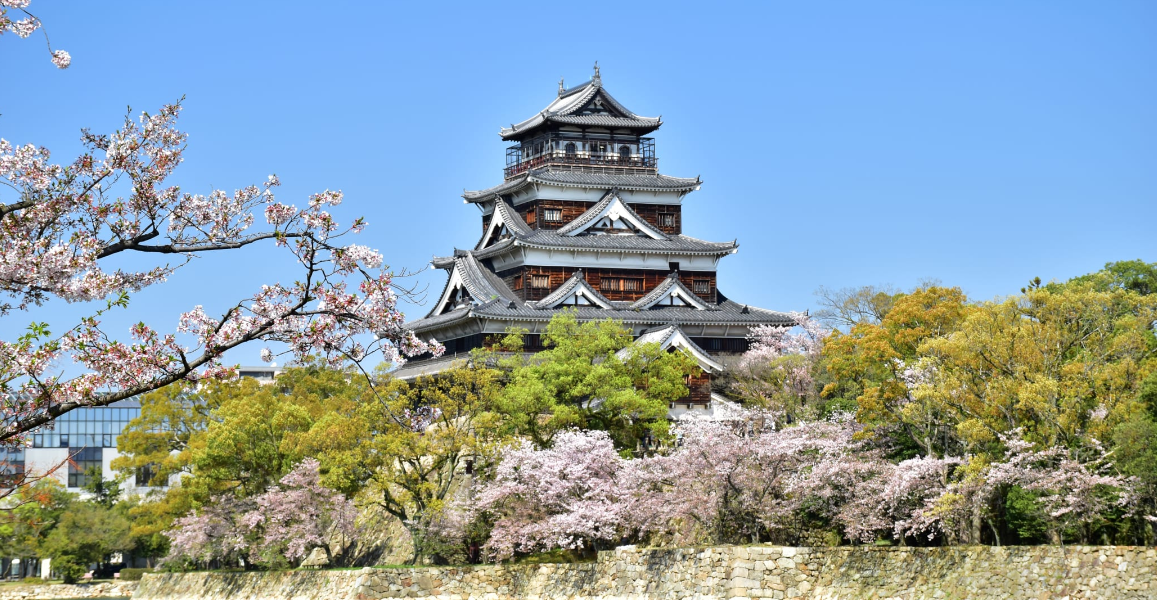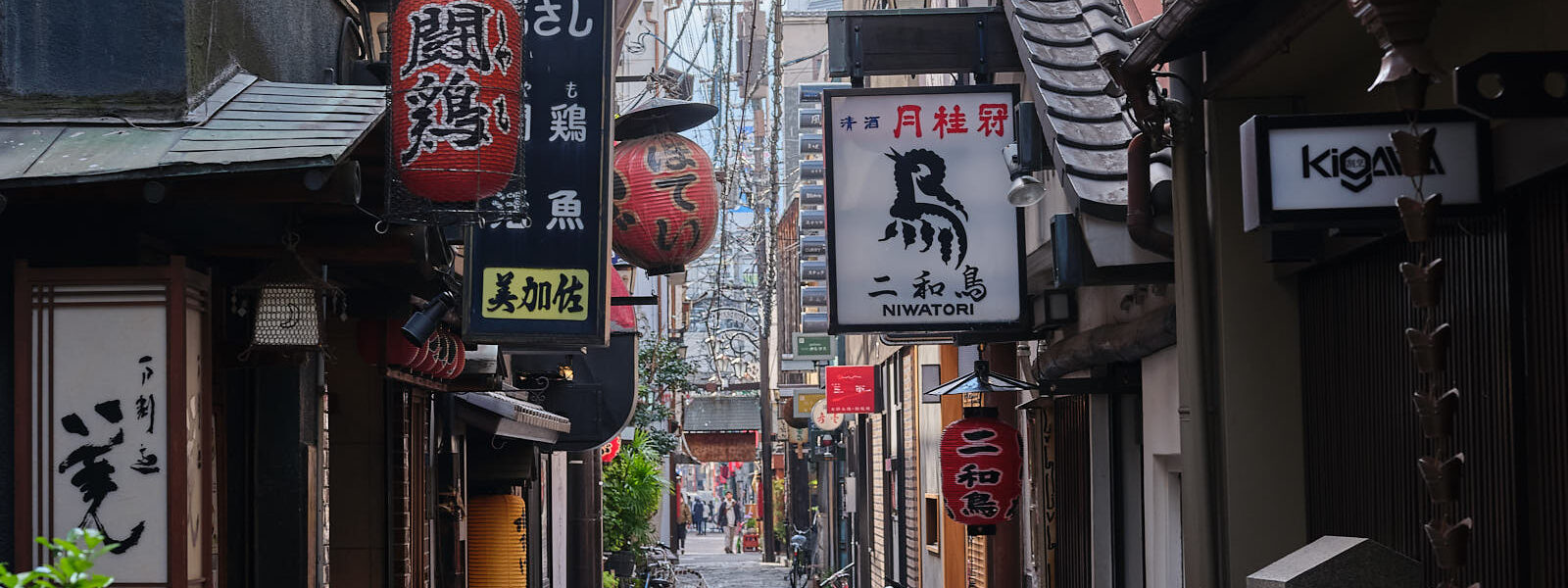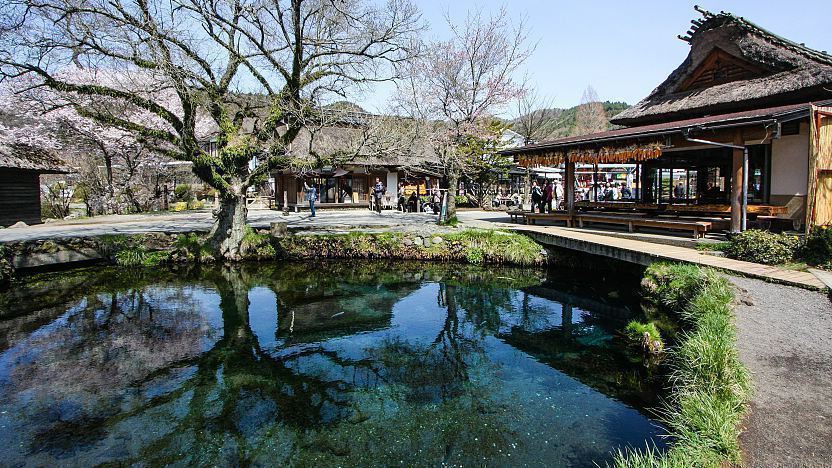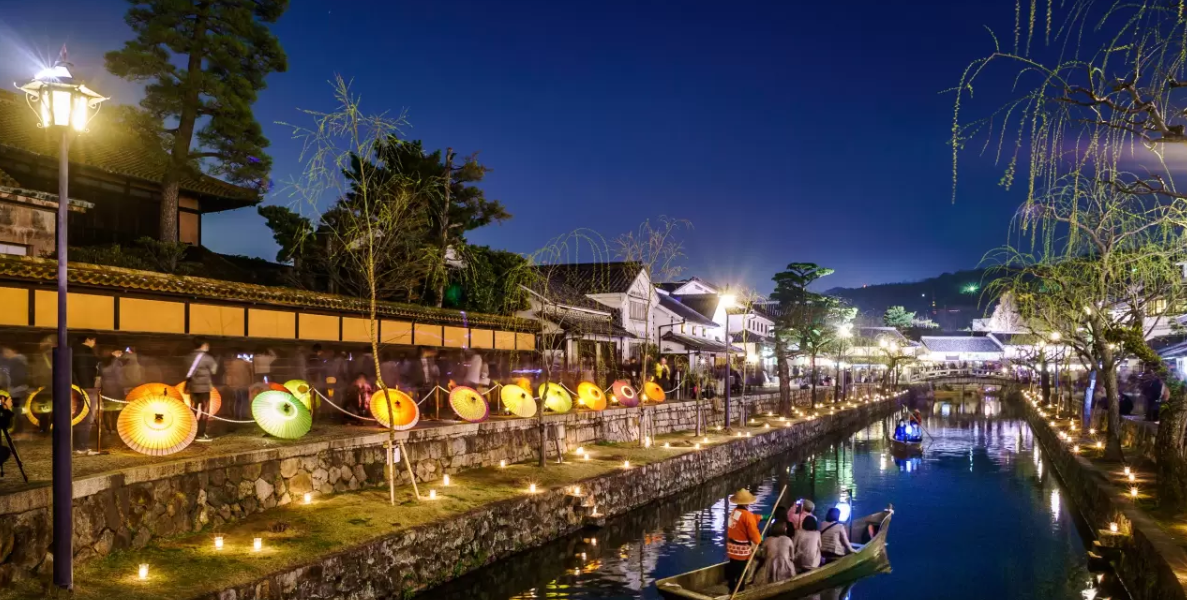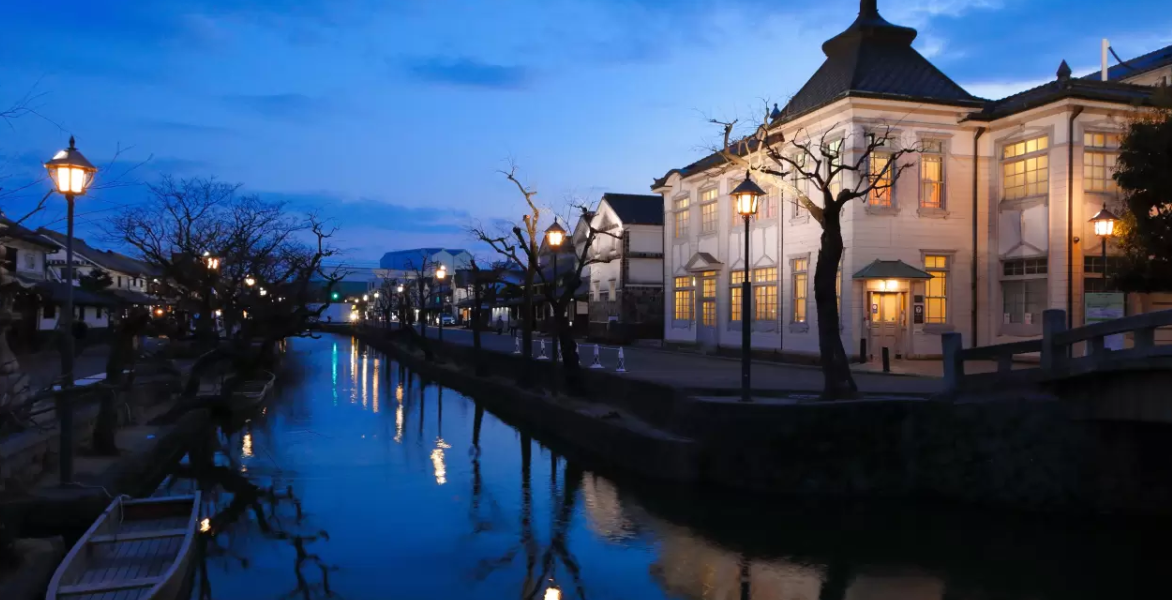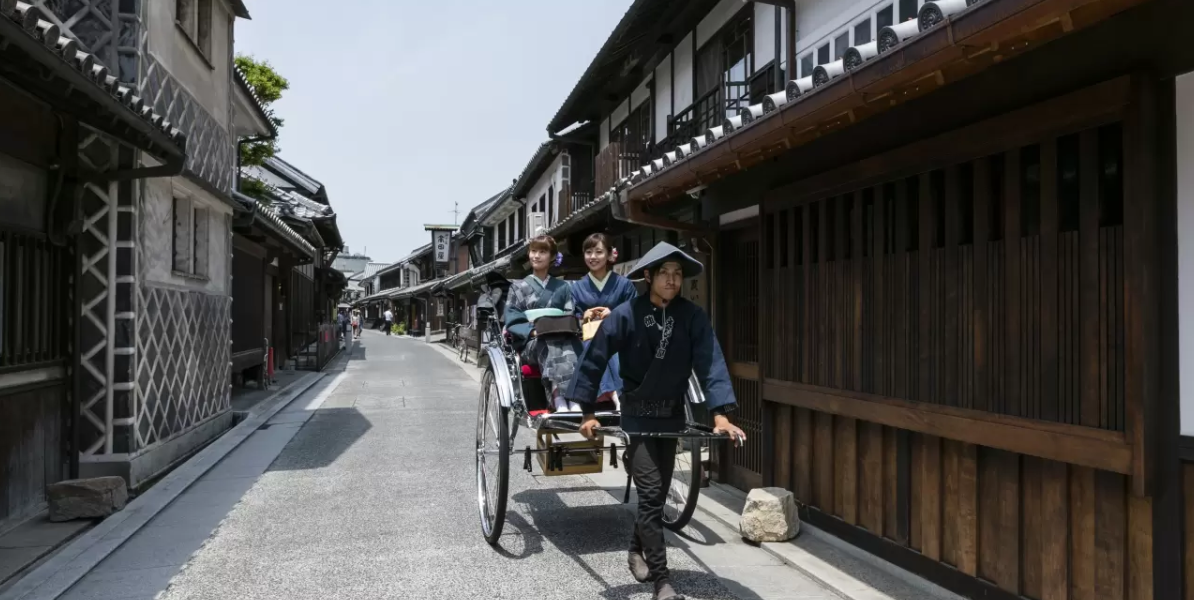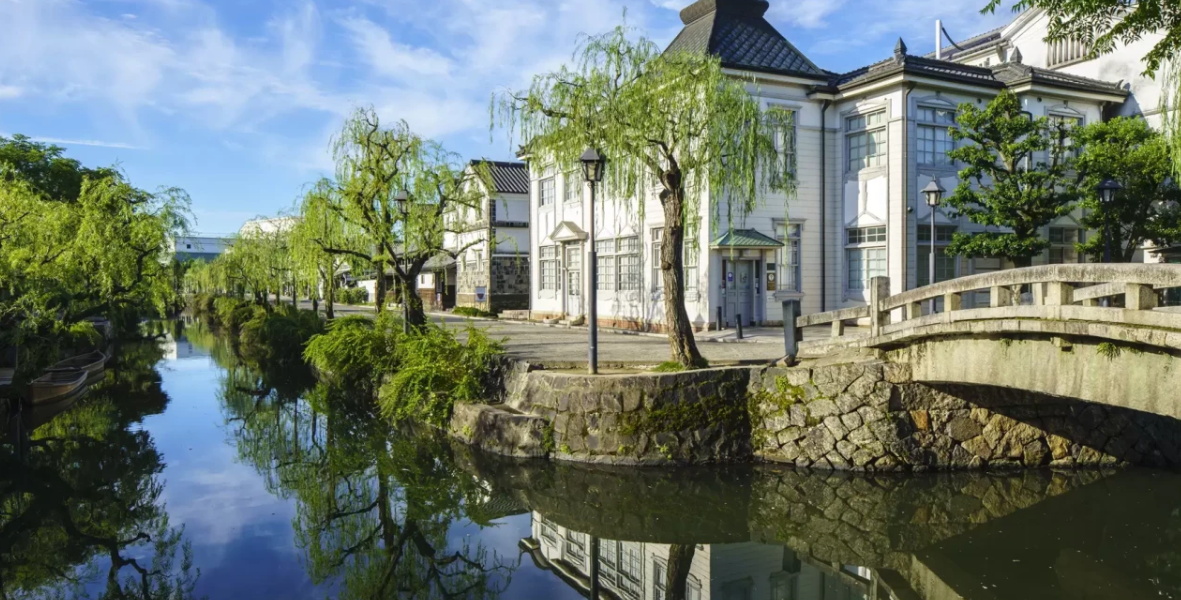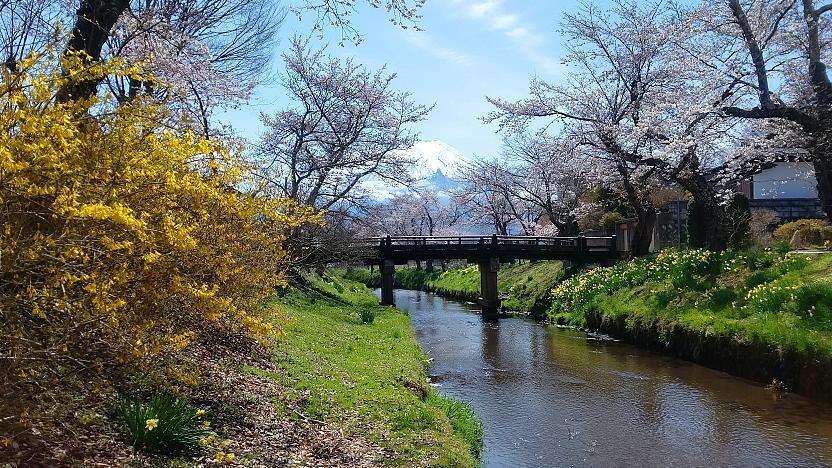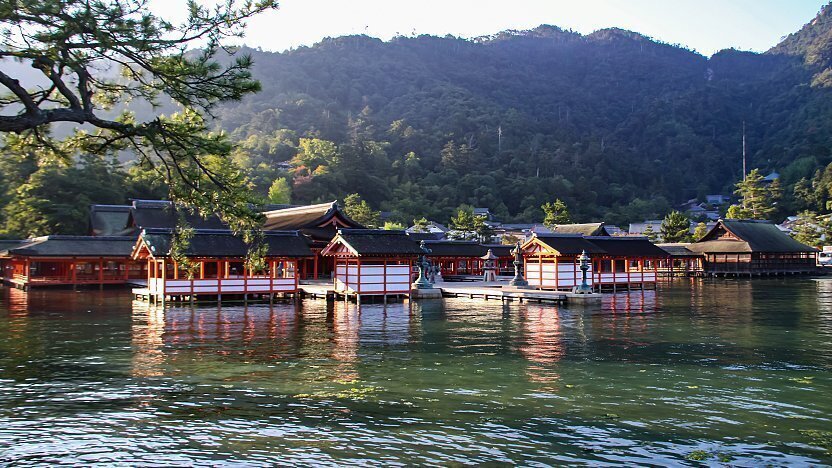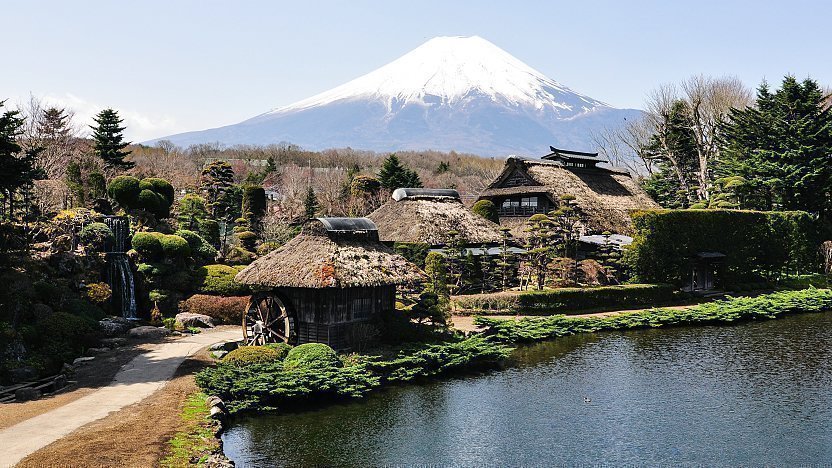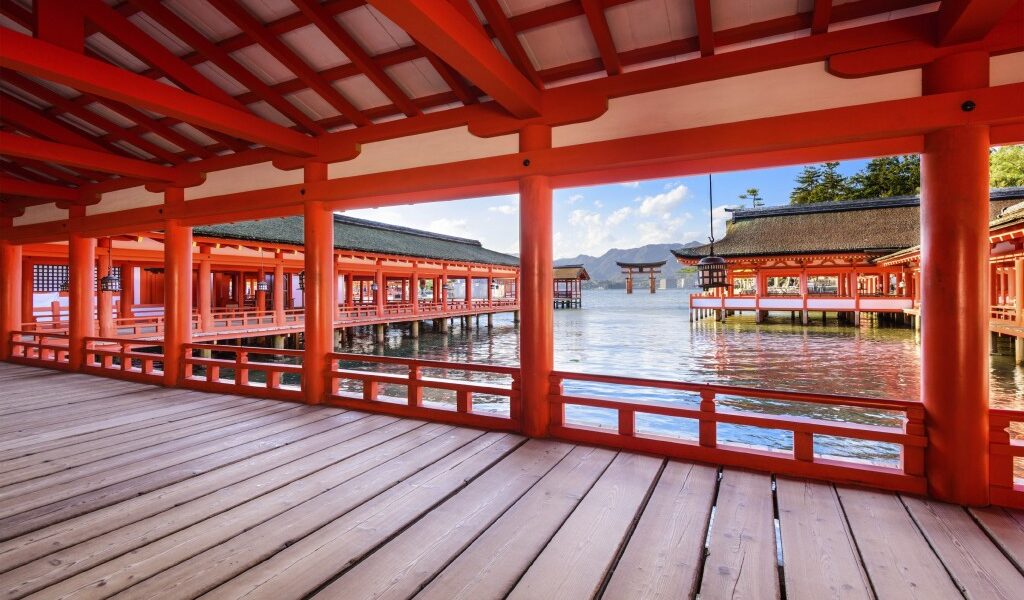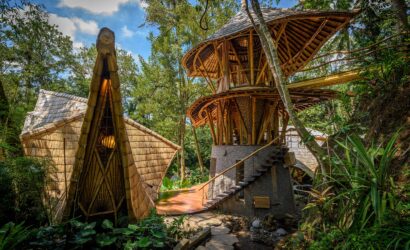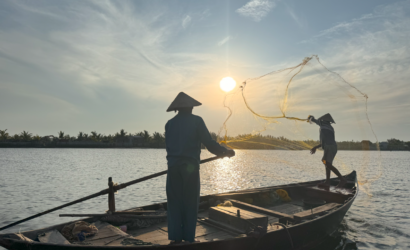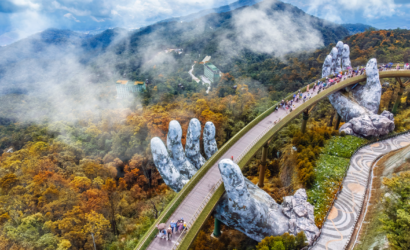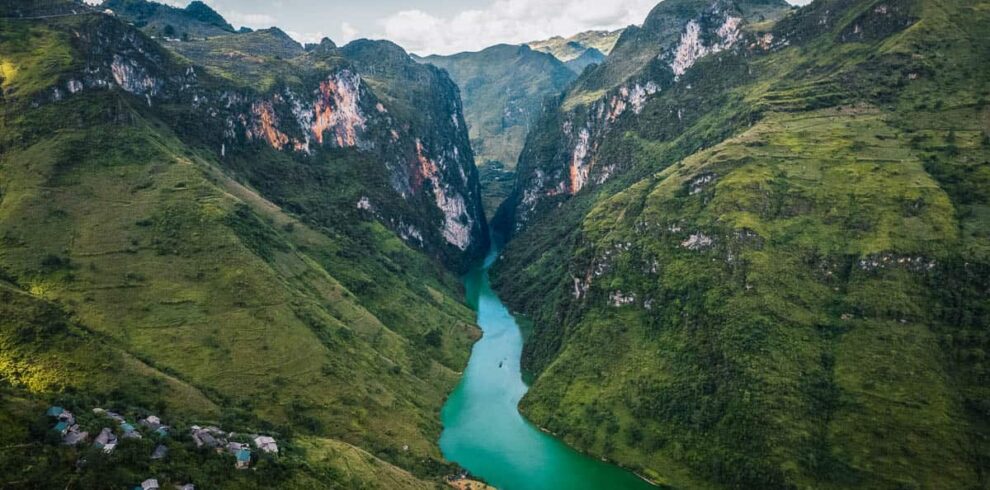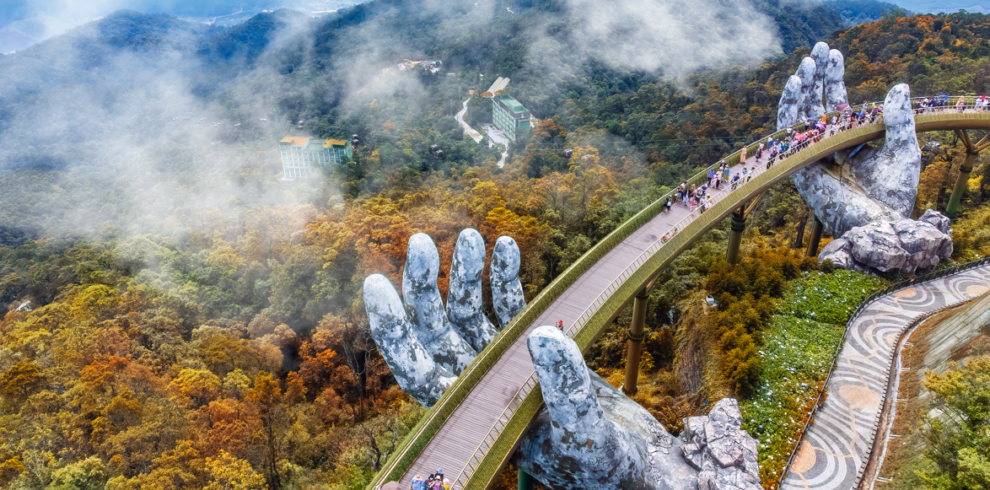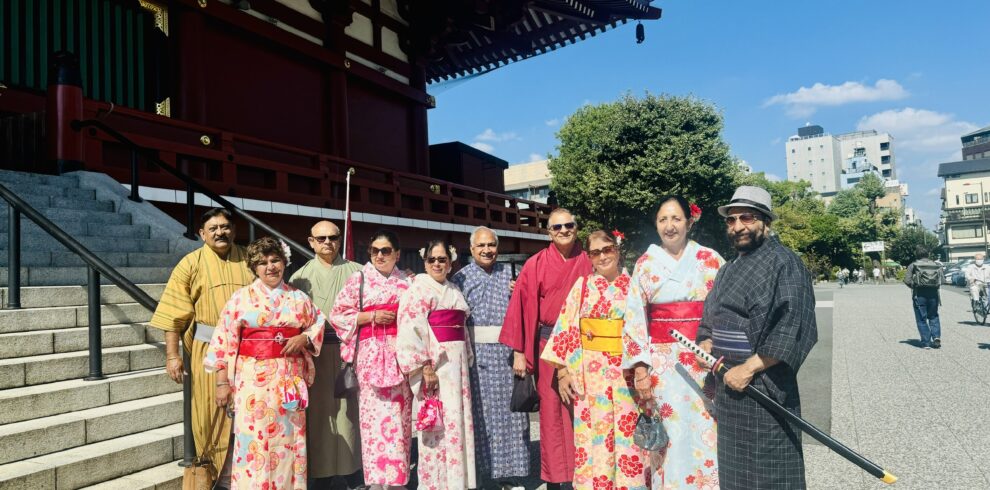-
Bus, Airlines
-
3, 4 Stars Hotels
-
Osaka
-
From Oct to May
-
Eco-Tour, Hiking
-
English speaking guide
-
Easy to Moderate
-
8-15
-
12
-
70
Overview
Discovering beautiful Japan in 15 Days from Osaka to Tokyo, in which you can visit amazing architecture of ancient temples, untouched nature beauty, developed mega cities and discover Japan traditions, customs and history.
Highlights
- Osaka is the kind of destination that blends ancient history with ultra-modern attractions.
- Kyoto, once the capital of Japan, is a city on the island of Honshu. It's famous for its numerous classical Buddhist temples, as well as gardens, imperial palaces, Shinto shrines and traditional wooden houses.
- Standing at 3,776 meters, Mt. Fuji is the tallest peak in Japan, the result of volcanic activity that began approximately 100,000 years ago.
- Tokyo, Japan’s busy capital, mixes the ultramodern and the traditional, from neon-lit skyscrapers to historic temples.
- Experience bullet train in Japan and Sagano Romantic Train in Kyoto
Itinerary
Arrival at Kansai Airport
Guide pick you up and using hotel shuttle bus to hotel
Check in and take a rest.
Overnight at Kansai Washington hotel: https://kansai-ap.washington-hotels.jp/
While early travel tended to be slower, more dangerous, and more dominated by trade and migration, cultural and technological advances over many years have tended to mean that travel has become easier and more accessible. The evolution of technology in such diverse fields as horse tack and bullet trains has contributed to this trend.
Breakfast at hotel, then you will visit:
- Osaka Castle: Osaka Castle is a Japanese castle in Chūō-ku, Osaka, Japan. The castle and fortress are one of Japan's most famous landmarks and it played a major role in the unification of Japan during the sixteenth century of the Azuchi-Momoyama period.
- Shitennoji Temple: Shitennoji (四天王寺, Shitennōji) is one of Japan's oldest temples and the first ever to be built by the state. It was founded in 593 by Prince Shotoku, who supported the introduction of Buddhism into Japan. Although the temple's buildings burned down several times over the centuries, they were always carefully reconstructed to reflect the original 6th century design.
- Shinsaiashi str. Dotonbori: The lively entertainment area of Dotonbori is Osaka’s most famous tourist destination and renowned for its gaudy neon lights, extravagant signage, and the enormous variety of restaurants and bars.
- The name “Dotonbori” generally refers both to the Dotonbori Canal and to Dotonbori Street which runs parallel to the canal’s southern bank. It is one of the most colorful areas in Osaka and an absolute must-visit location when traveling through Kansai region.
Overnight in Osaka: Holiday Inn Express – 18m2 – 160cm bed https://www.ihg.com/holidayinnexpress/hotels/us/en/osaka/osams/hoteldetail
After breakfast,
Visit:
- Kurashiki Old town: This townscape, known for the characteristically Japanese white walls of its residences and the willow trees lining the banks of the Kurashiki River, has earned recognition as an Important Preservation District for Groups of Traditional Buildings. Kurashiki prospered in the 1600s as an integral destination for the transportation of goods, and the area continues to offer a historically attractive atmosphere of a calm and harmonious life.
- Okayama Gorakuen: a Japanese garden located in Okayama, Okayama Prefecture. It is one of the Three Great Gardens of Japan, along with Kenroku-en and Kairaku-en. Korakuen was built in 1700 by Ikeda Tsunamasa, lord of Okayama. The garden reached its modern form in 1863.
- Tachiura Park: Seto Big Bridge: A majestic white-steeled architectural wonder soaring both into the sky and distance, the two-tiered Seto Ohashi Bridge is a seaside landmark connecting Honshu, Japan's main island, to Shikoku against the backdrop of the Seto Inland Sea.
Then back to hotel
Overnight at Centurion Hotel and Spa: https://www.centurion-hotel.com/kurashiki/ 20m2 –– Breakfast and Free Hotspring (Onsen)
Breakfast at hotel, then you will visit
- Hiroshima: Heiwa kinen park: Hiroshima Peace Memorial Park is a memorial park in the center of Hiroshima, Japan. It is dedicated to the legacy of Hiroshima as the first city in the world to suffer a nuclear attack at the end of World War II, and to the memories of the bomb's direct and indirect victims.
- Hiroshima Castle: also called the Carp Castle, is a good example of a castle built on a plain in the center of a city as opposed to hilltop and mountaintop castles. Its main keep is five stories tall, and its grounds are surrounded by a moat. Also within the castle's precincts are a shrine, some ruins and a few reconstructed buildings of the Ninomaru (second circle of defense).
- Hiroshima Downtown: Hiroshima has a bustling downtown area, the main feature of which is Hondori Street, a pedestrian arcade that is closed to traffic and lined with shops and restaurants. It starts near the Peace Park and stretches east about half a kilometer. Running parallel to Hondori is Aioidori (Aioi Street), the main street used by cars and trams. Along Aioi Street stand a few large department stores where more shopping can be found.
Transfer to hotel
Overnight at Hiroshima Daiwa Roynet Hiroshima Ekimae: https://www.daiwaroynet.jp/hiroshima-ekimae/
Superior Room – 21.5m2 – 156cm bed
Breakfast at hotel, then you will visit Ikutsushima shrine ( miyajima )
- Ikutsushima shrine: a Shinto shrine on the island of Itsukushima, best known for its "floating" torii. It is in the city of Hatsukaichi, in Hiroshima Prefecture in Japan, accessible from the mainland by ferry at Miyajimaguchi Station.
Back to hotel
Overnight at Hiroshima Daiwa Roynet Hiroshima Ekimae: https://www.daiwaroynet.jp/hiroshima-ekimae/
Superior Room – 21.5m2 – 156cm bed
Breakfast at hotel, then experience bullet train from Shinkansen to Himeiji .
Bus pick up to castle..
- Himeji Castle: the largest and most visited castle in Japan, and it was registered in 1993 as one of the first UNESCO World Heritage Sites in the country.
Transfer to Kyoto: Gion Old town
- Gion (祇園) is Kyoto's most famous geisha district, located around Shijo Avenue between Yasaka Shrine in the east and the Kamo River in the west. It is filled with shops, restaurants and ochaya (teahouses), where geiko (Kyoto dialect for geisha) and maiko (geiko apprentices) entertain.
Overnight at Kyoto
Miyako Hotel – 21m2: https://www.miyakohotels.ne.jp/kyoto-hachijo/
Breakfast at hotel,
Fushimi Inari Shrine: Dedicated to Inari, the deity of a good harvest and success in business, Fushimi Inari Taisha is the head of all of Japan's Inari shrines. The seemingly endless path of vibrant orange torii gates that line the approach to Mt. Inari makes for an impressive setting and is one of the most famous images of Japan.
Kyoto: Kinkakuji (Golden Pavillon): a Zen temple in northern Kyoto whose top two floors are completely covered in gold leaf. Formally known as Rokuonji, the temple was the retirement villa of the shogun Ashikaga Yoshimitsu, and according to his will it became a Zen temple of the Rinzai sect after his death in 1408. Kinkakuji was the inspiration for the similarly named Ginkakuji (Silver Pavilion), built by Yoshimitsu's grandson, Ashikaga Yoshimasa, on the other side of the city a few decades later.
Kiyomizudera (清水寺, literally "Pure Water Temple") is one of the most celebrated temples of Japan. It was founded in 780 on the site of the Otowa Waterfall in the wooded hills east of Kyoto and derives its name from the fall's waters. The temple was originally associated with the Hosso sect, one of the oldest schools within Japanese Buddhism, but formed its own Kita Hosso sect in 1965. In 1994, the temple was added to the list of World Heritage Sites.Kiyomizudera (清水寺, literally "Pure Water Temple") is one of the most celebrated temples of Japan.
Sagano Romantic Train from Torokko Saga in Arashiyama, and passes a gorge offering a scenic view along the Hozu River, then enters and terminates in the basin of Kameoka.
Back to hotel
Miyako Hotel – 21m2: https://www.miyakohotels.ne.jp/kyoto-hachijo/
Breakfast at hotel, check out
Then you will continuously experience bullet train from Shinkansen to Hamamatsu.
Bus pick up to Gotemba
Visit:
- Hamanako Lake: Hamanako (浜名湖) is a large lake at the Pacific Coast of western Shizuoka Prefecture. Originally a fresh water lake separated from the ocean, Hamanako got connected to the ocean as a result of an earthquake in 1498 and its water turned salty. The majority of Hamanako's attractions are concentrated around the Kanzanji Onsen, a hot spring resort on an inlet along the lake's eastern shores.
- Gotemba Outlet:
- Fruit Picking by season: In Matsumoto, Nagano, Autumn is a season for beautiful colored leaves, mushrooms in forests, and yummy FRUITS!
You can buy and eat various kinds of apples and grapes in farmers’ markets.
- Ashiniko Lake Cruise and Black Egg
Hotel: Fujisan Garden Hotel – 40m2: https://fuji-garden.com/
After breakfast
- Fuji mt 5 station: lies at approximately the halfway point of the Yoshida Trail, which leads from Fujiyoshida Sengen Shrine at the mountain's base to the summit of Mount Fuji.
It is the most popular of the four 5th stations on Mount Fuji and the best developed and easiest to access by public transportation from Tokyo. The Fuji Subaru Line 5th Station is accessible almost year round, snow conditions permitting, and is a popular sightseeing spot even outside of the climbing season.
The station is reached by the Fuji Subaru Line, a scenic toll road up Mount Fuji's lower northern slopes, that begins in Fujikawaguchiko Town.
- Oshinohakkai Vikkage: Located at the foot of Mount Fuji, Oshino Hakkai ancient village possesses ancient Japanese architecture with beautiful peaceful scenery.
Currently, in the ancient village of Oshino Hakkai, there are still 8 small lakes left inside the village for visitors to admire.
- Oishi Park: Oishi Park on the north shore of Kawaguchiko is a park with a superb view of lake and Mt.Fuji at once. Various flowers bloom on the promenade along the lakeside according to the season. On a sunny day, there are many photographers who take pictures of Mt. Fuji, lake and flowers from early morning.
- Kawaguchi Lake: Lake Kawaguchiko (河口湖) is the most easily accessible of the Fuji Five Lakes with train and direct bus connections to Tokyo. A hot spring resort town with various tourist attractions and views of Mount Fuji is located around the lake's eastern end, while the northern and western shores are mostly undeveloped.
Hotel: Fujisan Garden Hotel – 40m2 https://fuji-garden.com/
- HAKONE ropeway Black egg: Owakudani is an active volcanic valley in the famed Hakone region west of Tokyo. It’s known to locals as "Jigokudani" (the Valley of Hell) and is famous for its black eggs, which are boiled in the sulfurous waters to give the egg shells a distinctive color.
- Ashi lake cruising: Cruise on Lake Ashi provides a beautiful view of Lake Ashi, a lake formed in the caldera of Mount Hakone after the volcano’s last eruption 3,000 years ago. Today, Lake Ashi is often pictured with Mount Fuji in the background as a symbol of Hakone. The best views of the lake in combination with Mt. Fuji can be enjoyed from Moto-Hakone, Hakone Detached Palace Garden, and from sightseeing boats cruising the lake. Note however, that clouds and poor visibility often block the view of Mt. Fuji, and you must consider yourself very lucky if you get a clear view of the mountain.
- Back to hotel and take a rest
Hotel in Yokohama New Otani Inn Yokohama Premium Hotel: https://www.newotani-innyokohama.jp/
Breakfast at hotel, then you will visit:
- Kamakura Hasedera: commonly called the Hase-kannon is one of the Buddhist temples in the city of Kamakura in Kanagawa Prefecture, Japan, famous for housing a massive wooden statue of Kannon. The ground holds a large variety of flowers which bloom throughout the year welcoming visitors.
- Tsuruoka Tenmangu: Tsuruoka Tenmangu Shrine in Tsuruoka City is a serene space where beautiful gardens and historic buildings speak to visitors. The shrine is dedicated to Sugawara no Michizane, the god of learning, and is believed to bring good harvests and ward off disasters
- Komachi Old Town: Kamakura Komachi-dori Street is a peculiar strip of modernity in the center of an ancient city, where trendy boutiques, gourmet cuisine, and a timeless ambience rub shoulders.
Hotel in Tokyo: Prince hotel - Shinagawa Prince Hotel - Official website (princehotels.com)
Breakfast at hotel, then you will discover:
- Meiji Temple: Meiji Shrine (明治神宮, Meiji Jingū) is a shrine dedicated to the deified spirits of Emperor Meiji and his consort, Empress Shoken. Located just beside the JR Yamanote Line's busy Harajuku Station, Meiji Shrine and the adjacent Yoyogi Park make up a large forested area within the densely built-up city and offer walking paths for a relaxing stroll away from the concrete.
- Imperial Temple: The current Imperial Palace (皇居, Kōkyo) is located on the former site of Edo Castle, a large park area surrounded by moats and massive stone walls in the center of Tokyo, a short walk from Tokyo Station. It is the residence of Japan's Imperial Family.
- Visit Epson Team lab Borderless: TeamLab Borderless is a collection of artwork that forms one borderless world. Each piece of art moves in and out of the rooms freely, forming connections and relationships with people, communicating with other works, and influencing and sometimes intermingling with each other.
Hotel in Tokyo: Prince hotel - Shinagawa Prince Hotel - Official website (princehotels.com)
Breakfast at hotel, visit:
- Sensoji Temple: is the oldest temple in Tokyo. It is dedicated to Kannon, the bodhisattva of compassion. Structures in the temple complex include the main hall, a five-story pagoda and large gates.
- Tokyo sky tree: broadcasting and telecommunications tower in Tokyo that is, at 2080 feet (634 metres), the world's second tallest structure.
- Kimono wearing renting
- Souvenir photo at Asakusa Sengen Shrine
Hotel in Tokyo: Prince hotel - Shinagawa Prince Hotel - Official website (princehotels.com)
Free and easy Hotel in Tokyo: Prince hotel - Shinagawa Prince Hotel - Official website (princehotels.com)
Please note that check out time in hotel in Japan is around at 10AM – 11AM
Free and easy until our guide pick you up to airport for flight home.
Trip ends!
Cost
The Cost Includes
- Double/ Twin based on accommodation and Breakfast
- Transportation during the trip
- English speaking guide
- Entrance fee
- 1 Bottle of water per day
The Cost Excludes
- International and domestic flight
- Single Supplement Charge
- Visa fee
- Wifi Router
- Tip for guide and driver
- Meals, which is not mentioned on itinerary
- Blackout date or special dates
- Saturday or preholiday charge
- .
